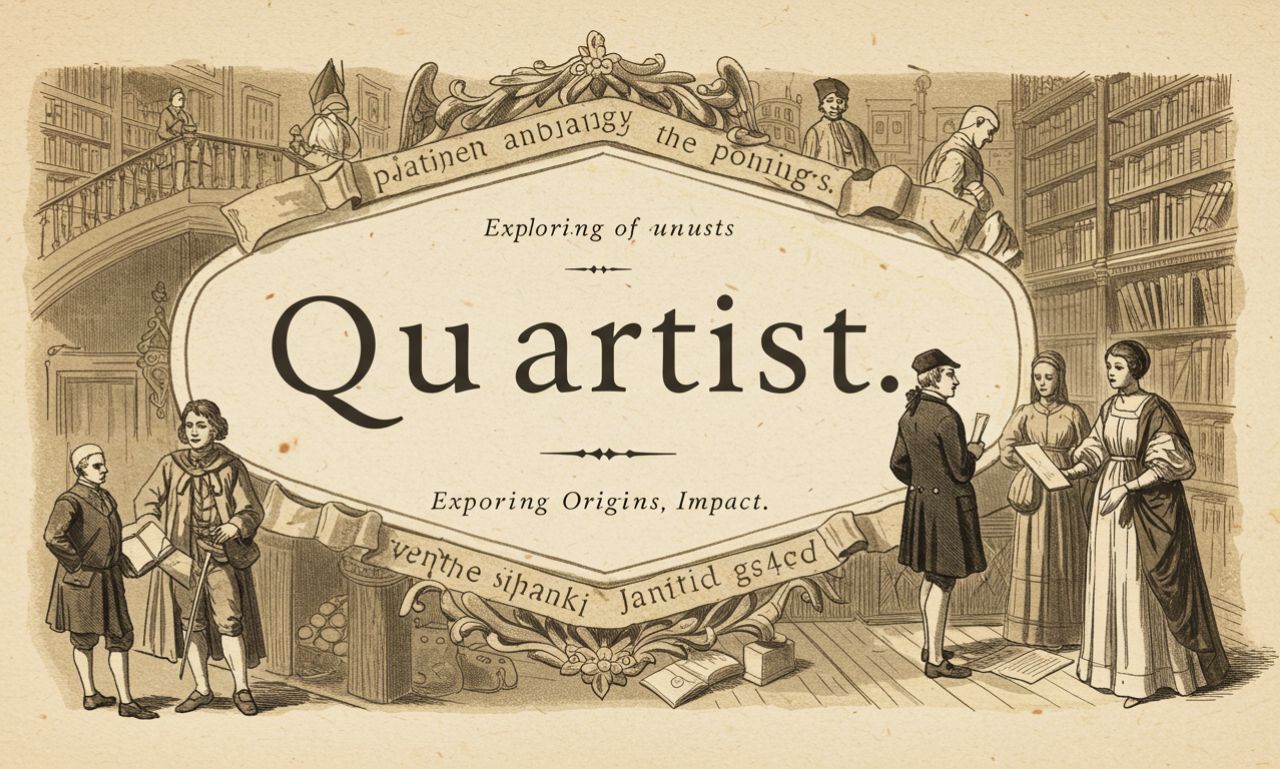The word quartist is a fascinating term that sparks curiosity. While not widely recognized in mainstream dictionaries, it has been increasingly used in art, culture, and modern creative discussions. Depending on context, quar tist may refer to an artist working with a specific medium, a conceptual philosophy in creativity, or even a cultural identity in modern digital art.
This article provides a complete guide to quartist—its origins, applications in art and culture, and how it continues to shape creativity in the digital age.
What is Quartist?
At its root, the word quar tist blends “quart” (meaning four or division into four parts) and “artist.” This gives it multiple interpretations:
-
An artist working in four dimensions or elements.
-
A creator who blends four disciplines—painting, music, writing, and digital art.
-
A symbolic reference to balance, harmony, and structure in creativity.
Thus, quar tist can describe both a person and a philosophy of art.
Origins of the Word Quartist
The term quar tist does not have a fixed historical origin, but several theories exist:
-
Artistic Roots: It may have developed as a way to categorize multi-disciplinary artists.
-
Numerical Symbolism: The number “four” has always carried symbolic meaning (four seasons, four directions, four elements). Quart ist may connect creativity with universal balance.
-
Modern Digital Era: In online communities, quar tist is sometimes used as a username or label for artists blending visual and digital arts.
The Philosophy of Quartist
The quartist philosophy revolves around the idea of integration and balance. Instead of focusing on one form of creativity, a quartist blends multiple forms.
Core Principles of Quartist:
-
Multidisciplinary expression – working across at least four creative areas.
-
Balance and structure – reflecting harmony through artistic design.
-
Innovation – embracing both tradition and technology.
-
Personal identity – using art as a way to express individuality.
Quartist in Visual Arts
One of the most common uses of quar tist is in relation to visual artists.
-
Painters and Sculptors: Quartists often experiment with four major mediums—paint, clay, digital, and mixed media.
-
Graphic Designers: In the digital era, quar tists frequently work with design software while blending traditional drawing skills.
-
Experimental Art: Some quartists push boundaries by merging sound, visuals, movement, and interactivity.
This approach makes the quartist a modern pioneer of artistic fusion.
Quartist and Digital Innovation
In technology-driven art, quar tist has gained a strong connection.
-
Digital Quartists: Artists who blend AI art, NFTs, virtual reality, and interactive installations.
-
Music Quartists: Producers combining four genres to create hybrid music styles.
-
Game Design Quartists: Creators who integrate storytelling, coding, visuals, and sound into immersive experiences.
The digital quartist embodies the future of creativity—merging human imagination with technological tools.
Quartist in Culture and Society
The idea of quar tist is not limited to art—it also reflects broader culture.
-
Cultural Identity: Some communities embrace quar tist as a cultural movement that values integration and innovation.
-
Social Media: On platforms like Instagram and TikTok, quartists share hybrid creative projects, often spanning four themes.
-
Collaborative Spaces: Quar tists often form collectives where different artists contribute unique talents toward one shared vision.
In this sense, quartist represents community-driven creativity.
The Role of Quartist in Personal Development
Beyond art, quar tist can be seen as a lifestyle and mindset.
-
Balance: Encourages individuals to balance four aspects of life—mind, body, soul, and creativity.
-
Self-Expression: Quar tists embrace their identity by creating unique, multidimensional projects.
-
Adaptability: By practicing across different disciplines, quar tists become more flexible thinkers.
This makes quartist not just an artistic label but a personal philosophy for growth.
Examples
To better understand the concept, here are practical examples of qua rtist approaches:
-
A painter who also writes poetry, creates digital illustrations, and performs live art.
-
A musician who blends four cultural genres into one new sound.
-
A designer who creates sustainable fashion, visual art, digital concepts, and community projects.
-
An educator teaching through four mediums—visuals, sound, storytelling, and digital platforms.
These examples show how quart ists embody versatility and multidimensional creativity.
Benefits of Embracing
Becoming a quar tist offers several advantages:
-
Creative Expansion: Artists explore multiple forms instead of limiting themselves.
-
Innovation: Cross-disciplinary work sparks new ideas.
-
Resilience: Quar tists can adapt to changes in cultural and digital trends.
-
Cultural Relevance: Their work resonates with diverse audiences.
Challenges
However, quartists also face challenges:
-
Identity Confusion: Difficulties in defining themselves in a single category.
-
Time Management: Balancing four disciplines requires dedication.
-
Recognition: Traditional art industries may struggle to categorize quar tists.
-
Overextension: Risk of being a generalist instead of mastering one area.
Despite these, quar tists continue to thrive as pioneers of hybrid creativity.
The Future of Quartist
Looking ahead, quartist is expected to gain more recognition as art and technology evolve.
Future Possibilities:
-
AI-assisted creativity: Quartists will merge human art with artificial intelligence.
-
Virtual art worlds: VR and AR exhibitions will expand quar tist expression.
-
Global collaborations: Online platforms will unite quartists from different cultures.
-
Eco-conscious quar tists: Sustainability will become a key element in quar tist practices.
This makes quar tist not just a current trend but a long-term movement in art and society.
Conclusion
The word quar tist represents a new kind of artist—one who integrates four or more disciplines into a unified expression of creativity. From visual art to technology, culture, and personal philosophy, quar tist is both a label and a mindset.
As society moves toward interconnected and digital-first experiences, the quar tist philosophy of balance, integration, and innovation will only grow stronger. Whether through painting, music, design, or digital platforms, quar tists are shaping the future of art and human expression.

